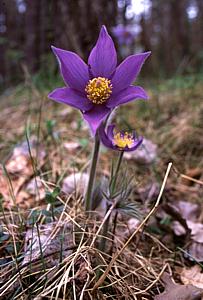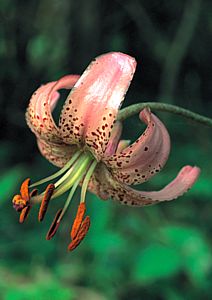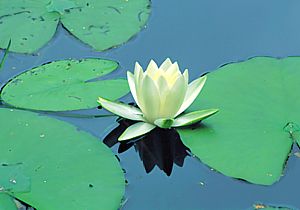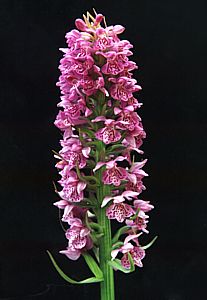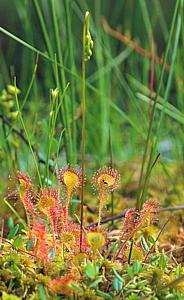|
PROTECTED FLORA
|
|||||||||||
Text:
|
Species protection
Wigry National Park (WNP) is characterized by a great abundance of plant species. Until now, the presence of almost 1000 vascular plant species has been observed, among which are rare species, often composing extremely unique plant clusters. a special group includes 88 species which have been placed under protection by means of an Ordinance by the Minister of Environmental Protection, Natural Resources and Forestry (currently the Minister of Environment) of the 11th of October 2001 (Journal of Laws No. 106, item 1167).
The objective of the protection of flora species is to secure the continuity of the presence of the selected plant species and their biotopes, especially the rare, endemic species, species susceptible to threats and endangered by extinction, as well as those protected by international treaties. Two forms of species protection are applied: strict and partial. Strict protection is based on banning the harvesting, deliberate destruction and damage, preparation and processing, selling, buying and exporting the plants and their parts. Moreover, destroying the biotopes of those plants and using chemical agents within the proximity of the plant sites is also forbidden. If a site of a strictly protected species becomes endangered as a result of environmental changes, the local departments of state authorities are bound to take preventive actions.
With regard to the plants protected partially, certain regulations concerning harvesting are applied – the negotiated quantities of plants can be harvested in selected areas, however only by persons entitled to do so. Flora species protection is greatly important not only for the preservation of the most precious elements of the natural environment but also for education. It helps to limit the commercial harvesting of many plant species, persuades for fuller protection of some plants (e.g. by creating reservations) and is a good way of depicting the real scale of local flora endangerement and the efficency of the protective actions. Species protection is also an element which evokes respect for nature in the society and one that shows nature’s beauty and diversity. Currently, protective measures cover 262 vascular plants species, 25 of which are protected partially. Specifying the exact number of strictly protected species is difficult due to a diversified plant taxonomy used in our country.
The majority of the plants included in the list of protected species are the plants with narrow range of tolerance to environmental changes (stenotipical), endemic plants, plant relics, sparse species, species on dispersed sites or on borders of geographical ranges, and endangered by extinction or by a serious reduction in population (e.g. Turk’s cap lily). This also includes the species with long and complicated reproduction cycles (e.g. Lycopodium annotinum) that have less chance of survival, as well as the overexploited species. Among the rare and endangered species, the ones endangered by natural factors – climatic, geographical etc. are a minority. These are endemic plants, plant relics, plants growing on the borders of their ranges or even outside of their compact geographical ranges in specific micro-habitat conditions. Most of the protected plants are the species directly or indirectly endangered by human activities – the species whose sites die out because of destruction and transformation of forest and meadow ecosystems, river regulations, eutrophication, water contamination, etc. Some of the protected species have been included in the registers of rare and endangered species, such as "The Polish Red Book of Plants" and "The Red List of Vascular Plants Endangered in Poland".
Until now, the presence of 68 plant species that are under strict protection and 20 plant species that are under partial protection have been determined in the area of WNP. It is over 34% of all protected species in the country.
Among all the protected species existing in WNP, three of them - smooth carline (Carlina acaulis), common sea buckthorn (Hippophaë rhamnoides) and purple foxglove (Digitalis purpurea) – have been introduced artificially. Five other species are suspected to be extinct in this area, as despite the intensive search they have not been found again. These are: marsh gentian (Gentiana pneumonanthe), Gentiana uliginosa, Nuphar pumila and Charle’s royal sceptre (Pedicularis sceptrum-carolinum). Subsequent three species also require confirmation because they were known from a very limited number of habitants and they have not bee registered for years. These include the following spieces: Adenophora lilifolia, Diphasiastrum tristachyum and Ostericum palustre. Serious doubts also regards presence of Dactylohiza traunsteineri in the area of WPN and in the area of the whole Poland.
15 species subject to protection and present in the area of the park have been included in the "Polish Red Book of Plants" (in total, there are 32 species of plants in the area of WPN which are endangered with extinction), including 8 species with the status of a species endangrered with extinction, 5 species threatened with extinction (e.g. Nymphaea alba) and 2 species belonging to the group of "low risk". the group of plants threatened with extinction includes the following species: Diphasiastrum tristachyum, Betula humilis, Saxifraga hirculus, Ostericum palustre, Neottianthe cucullata, Hammarbya paludosa, Dactylohiza ruthei and Dactylohiza incarnata ssp ochroleuca. The "Red List of Vascular Plants Endangered in Poland" includes 56 species 26 of which have the status of a species endangered by extinction - 2 species are regarded to be dieing out, 4 with a status of rare species (e.g. Drosera rotundifolia) and 20 with the status of a species endangered with extinction. Among the protected plants in the Park, 7 relics of the last glaciation period have been noted. These are: shrubby birch (Betula humilis), Charle’s sceptre (Pedicularis sceptrum-carolinum), Nuphar pumila, Greek valerian (Polemonium coeruleum), twin flower (Linnaea borealis), marsh tea (Ledum palustre) and Neottianthe cucullata.
|
||||||||||
|
|
|
